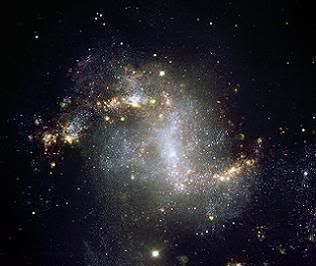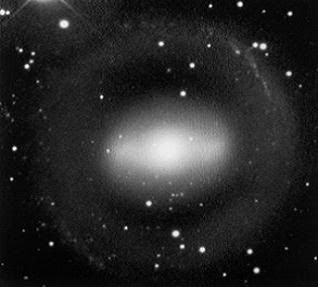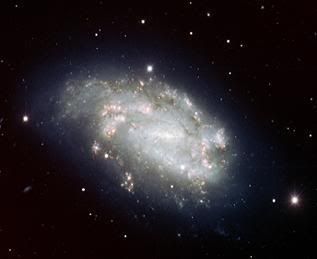Post by glactus on Feb 17, 2008 6:10:23 GMT

Reticulum was invented by Lacaille during his stay at the Cape of Good Hope between 1751 - 1752. It is best seen in northern latitudes in January. The constellation resembles a gridwork of lines in the eyepiece of an optical instrument, also known as a reticle. It is sometimes described as a net. Reticulum, the Net or Reticle, is completely visible in latitudes South of 23 degrees North from October - December.
Notable stars:
Alpha Ret
Alpha, a; has a magnitude of 3.34 and is of a yellow color. Distance is 163 light years and is a giant 100 times more luminous than the Sun. location is in the center of the constellation.
Beta Ret
Beta, b; with a magnitude of 3.84, and 100 years away, is an orange star, phantom K. and located to the south of the constellation near Hydrus,
Gamma Ret
Gamma y is a red phantom M star with a magnitude of 4.51. It is 300 times more luminous than our sun and located in the center of the constellation near "a" ret. Distance from Earth is 490 light years
Zeta Ret
The double zeta Ret can be viewed with the naked eye or binoculars if the observing conditions are not too well. This pair consists of two G-type stars of 5th magnitude lying aproximately 40 light years away.
Notable objects:

NGC 1313
In visible light, NGC 1313 seems dominated by scattered patches of star formation which give our picture a rather ragged appearance.
Seen with a radio telescope, the galaxy is rich in hydrogen, the raw material of stars, and the gas circulates around the centre of the galaxy in a well ordered way, NGC 1313 is at a distance of about 15 million light years, close enough for some of its brightest stars to be seen as individuals. Magnitude is 9.1

NGC 1543
NGC 1543 lies 1.6° north of Epsilon Ret in the NE of Reticulum. Its integrated magnitude of 10.6 is only slightly fainter than NGC 1559, but it's more extended, which makes all the difference. Careful observation shows a not-very-obvious E-W-elongated smudge, that disappears from view when there is the slightest haziness in the air. Distance from Earth is 65 million light years.

NGC 1559
NGC 1559 This magnitude 10.4 barred spiral showed up as a uniform elliptical glow, without perceptible structure, tapering off in brightness towards the edges. It sits in a field of foreground stars, one of which could be seen with averted vision in front of the galaxy, SW of the centre. Distance from Earth is 50 million light years.

NGC 1313
credits:
image: Reticulum map: wikipedia
en.wikipedia.org/wiki/Category:Reticulum_constellation
20album%20ten/Reticulummap-1.jpg[/IMG]
image: NGC 1313:starlightbg
starlightbg.wordpress.com/2006/11/
image: NGC 1559:origo
www.origo.hu/tudomany/vilagur/20050909szupernova.html
image: NGC 1543
nedwww.ipac.caltech.edu/level5/Rings/Figures/Rings14.gif


